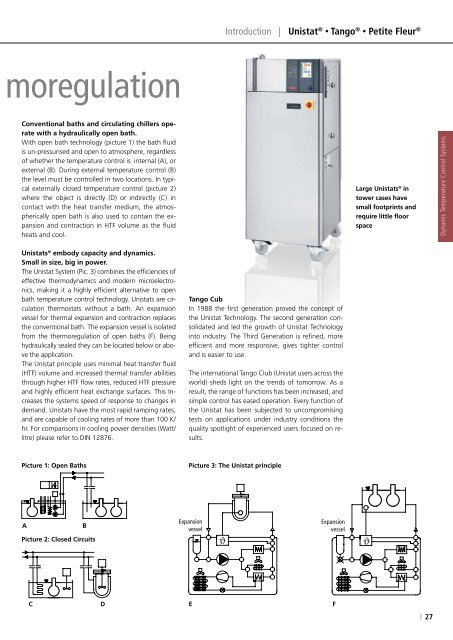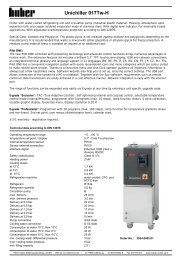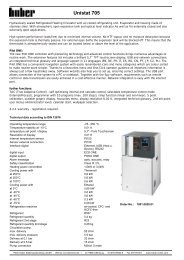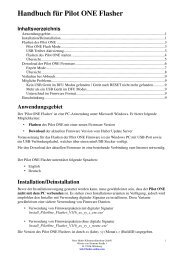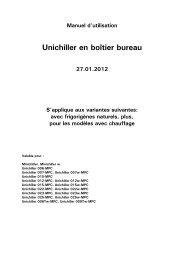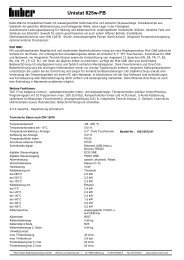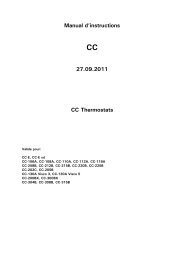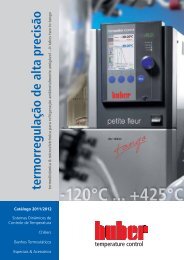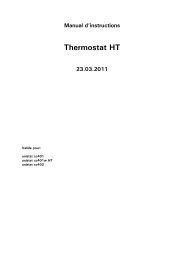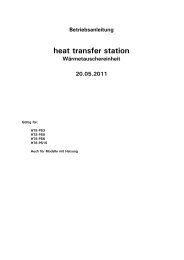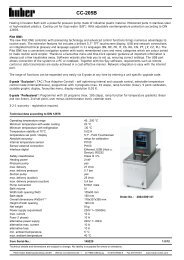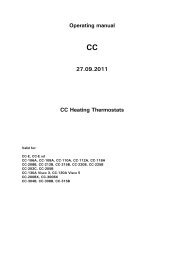Plug & Play - HUBER
Plug & Play - HUBER
Plug & Play - HUBER
You also want an ePaper? Increase the reach of your titles
YUMPU automatically turns print PDFs into web optimized ePapers that Google loves.
moregulation<br />
Conventional baths and circulating chillers operate<br />
with a hydraulically open bath.<br />
With open bath technology (picture 1) the bath fluid<br />
is unpressurised and open to atmosphere, regardless<br />
of whether the temperature control is internal (A), or<br />
external (B). During external temperature control (B)<br />
the level must be controlled in two locations. In typical<br />
externally closed temperature control (picture 2)<br />
where the object is directly (D) or indirectly (C) in<br />
contact with the heat transfer medium, the atmospherically<br />
open bath is also used to contain the expansion<br />
and contraction in HTF volume as the fluid<br />
heats and cool.<br />
Unistats ® embody capacity and dynamics.<br />
Small in size, big in power.<br />
The Unistat System (Pic. 3) combines the efficiencies of<br />
effective thermodynamics and modern microelectronics,<br />
making it a highly efficient alternative to open<br />
bath temperature control technology. Unistats are circulation<br />
thermostats without a bath. An expansion<br />
vessel for thermal expansion and contraction replaces<br />
the conventional bath. The expansion vessel is isolated<br />
from the thermoregulation of open baths (F). Being<br />
hydraulically sealed they can be located below or above<br />
the application.<br />
The Unistat principle uses minimal heat transfer fluid<br />
(HTF) volume and increased thermal transfer abilities<br />
through higher HTF flow rates, reduced HTF pressure<br />
and highly efficient heat exchange surfaces. This Increases<br />
the systems speed of response to changes in<br />
demand. Unistats have the most rapid ramping rates,<br />
and are capable of cooling rates of more than 100 K/<br />
hr. For comparisons in cooling power densities (Watt/<br />
litre) please refer to DIN 12876.<br />
Picture 1: Open Baths<br />
A<br />
B<br />
Picture 2: Closed Circuits<br />
C D<br />
Introduction | Unistat ® • Tango ® • Petite Fleur ®<br />
Tango Cub<br />
In 1988 the first generation proved the concept of<br />
the Unistat Technology. The second generation consolidated<br />
and led the growth of Unistat Technology<br />
into industry. The Third Generation is refined, more<br />
efficient and more responsive, gives tighter control<br />
and is easier to use.<br />
The international Tango Club (Unistat users across the<br />
world) sheds light on the trends of tomorrow. As a<br />
result, the range of functions has been increased, and<br />
simple control has eased operation. Every function of<br />
the Unistat has been subjected to uncompromising<br />
tests on applications under industry conditions the<br />
quality spotlight of experienced users focused on results.<br />
Picture 3: The Unistat principle<br />
Expansion<br />
vessel<br />
Expansion<br />
vessel<br />
E F<br />
Large Unistats ® in<br />
tower cases have<br />
small footprints and<br />
require little floor<br />
space<br />
27<br />
Dynamic Temperature Control Systems


